|
The family of the aromatic varieties - that is those which wines express a
strong and intense aroma of grape - is very small. A family so small as to
count three members only: Muscat Blanc, Brachetto and Gewürztraminer. A more
numerous family is the one of the so called semi-aromatic grapes, that is those
varieties which wines express aromas of grape, however not so intense and
strong in order to become dominant in the olfactory profile. In this family we
have, for example, the many Malvasia grapes existing in the viticoltural
scene of the world and Sauvignon Blanc. In wines produced with these varieties,
the aromas of grape is sometimes present, sometimes even light and faint,
depending on the territory and wine making techniques. They do not however
express the power and intensity of real aromatic grapes, as in these varieties
the aromas of grape is, not only a primary quality, but also a dominant one.
The aromatic properties of varieties belonging to this family are - for the
producers who are using these grapes - a quality to keep in order to not
mystify their identity. For this reason, Muscat Blanc, Brachetto and
Gewürztraminer are rarely vinified by using wood containers. In case they are
going to be used, it is usually put a lot of attention in order to not allow
the wood covering the aromatic richness of these grapes, therefore - in these
cases - it is preferred not using invasive woods. Two of these varieties -
Muscat Blanc and Brachetto - have been particularly successful for the
production of sparkling wines, styles mainly known and appreciated in Italy.
The success has been given by the method invented by Federico Martinotti - the
fermentation in closed tank - which he created for the vinification of Muscat
Blanc. This method in fact ensures the keeping of aromatic qualities of the
grapes, a characteristic which allowed this method to be successfully used with
other varieties as well.
Brachetto is a red berried variety and its spreading is virtually limited to
Piedmont, in particular in the territories of Acqui Terme - in the
province of Alessandria - Asti and Langhe. It should be noted Brachetto
produced in Acqui Terme is recognized with the highest ranking of the Italian
quality system and the bottles produced here are marked as Denominazione
d'Origine Controllata e Garantita (Denomination of Controlled and Guaranteed
Origin). It should also be noted the wines produced with Brachetto - dry,
sparkling and sweet - can also be recognized as DOC Piemonte. This aromatic red
variety has an interesting wine making versatility. The sparkling style
certainly is the most famous one, however Brachetto can also be used for
interesting interpretations also in dry and sweet styles, always expressing its
exuberant aromatic power. In particular, it is mentioned the so called
Birbet, name used in Piedmont for dry wines produced with Brachetto
grape.
The origins of Brachetto grape are still today uncertain, however it can be
said this variety was known to be present in the territory of Alessandria since
the times of ancient Romans. For a long time it was believed Brachetto was
similar to French grape Braquet. Genetic research done on the two grapes
have discovered the absence of common properties, therefore denying this
theory. A pretty successful variety of the past in the southern territory of
Piedmont, the spreading of Brachetto was strongly limited at the end of the
1800s because of phylloxera. The limitation was such which made Brachetto a
virtually unknown variety until the half of the 1900s. It will in fact be after
1970 some producers resumed the production of this variety - in particular
Arturo Bersano - by using the Martinotti method, also known as Charmat,
therefore making sparkling wines. An event determining the striking success of
Brachetto d'Acqui while giving back the original glory to this ancient variety
of Piedmont.
In Italy the destiny of Muscat Blanc has been successful, just like Brachetto,
thanks to the refermentation method in closed tank, therefore becoming - as a
matter of fact - one of the most famous Italian sparkling wines known and
appreciated in the world. Asti is the Italian capital city of this aromatic
variety, however - as opposed to Brachetto - Muscat Blanc is also found in
other areas of the world, in particular France. A very versatile grape for the
production of wine, Muscat Blanc is also successfully used for dry wines -
including late harvest wines - as well as sweet wines made from dried grapes.
On this regard, it should be said Italy represents a sort of exception - here
Muscat Blanc is mainly produced in sparkling or slightly sparkling styles -
whereas in the rest of the world it is mainly made as dry, sweet or late
harvest styles. No matter the style, Muscat Blanc can be easily recognized in
its wines because of its characteristic and intense grape aroma.
|
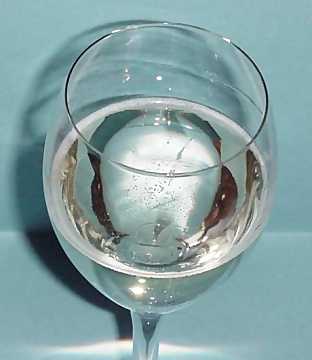 | |
| The crown of bubbles forming at the
edge of Asti Spumante after few seconds | |
|
Muscat Blanc is one of the most ancient grapes and of which we have a good
number of historical sources. It is believed it was introduced in the Italian
territory by ancient Greeks and it is likely its origin is the eastern area of
the Mediterranean. The name of this famous grape originates from its
characteristic and intense aroma. It is very likely Muscat comes from Latin
muscum - musk - as, in ancient times, this was the most common olfactory
association done with wines produced with this grape. Still today in France
they are used to define grapes recalling - in some ways - this particular
aroma with the term musqué and in this country this variety is known as
Muscat. The family of muscat grapes is pretty big and when not expressly
specified, it is always referred to Muscat Blanc, the main variety and
known in France as Muscat Blanc à Petits Grains.
Our tasting by contrast will examine the most famous style in Italy for
Brachetto and Muscat Blanc, the sparkling wine produced with the fermentation
in closed tank. Acqui Terme, in province of Alessandria, and Asti are the
Italian capital cities respectively for sparkling wines produced with
Brachetto and Muscat Blanc. The production provides for the fermentation in
closed tank by keeping a pretty low alcohol by volume - usually 5-6% -
therefore leaving a substantial quantity of sugar in the wine. This operation
gives the two wines their characteristic sweetness that, with the help of
crispness, make them very balanced, also thanks to effervescence. For our
tasting we will therefore examine Brachetto d'Acqui and Asti Spumante, both
belonging to the latest vintage. The two wines will be served in two tasting
glasses at a temperature of 10 °C (50 °F), which will allow the proper
appreciation of aromas without favoring the excessive perception of sweetness.
Let's pour Asti Spumante in the first glass. We will observe the lively
evolution of foam which, in general terms, tends to dissolve after few seconds,
forming the so called crown, visible in the side of the glass and near the
surface of wine. The development of bubbles is intense and continuous: on this
regard we should notice their size, bigger than those in a wine produced with
the classic method, that is by using the refermentation in bottle. The color of
Asti Spumante generally is greenish yellow, a hue we can see in nuances as
well. The appearance of Brachetto d'Acqui is - of course - different from the
previous wine, at least in color. In the glass we will in fact observe a ruby
red color ranging from pale to intense, sometimes cherry pink, with pink
nuances and purple hints. The same considerations said for Asti Spumante and
concerning effervescence and bubbles are valid - in general terms - for
Brachetto d'Acqui as well.
The evaluation of the olfactory profile in both wines will reveal remarkable
differences while keeping a fundamental point in common. It should be in fact
noticed both Muscat Blanc and Brachetto belong to the small family of aromatic
varieties. In both wines will therefore perceived a strong and intense grape
aroma and this virtually is the only common quality. Grapes capable of proving
their good wine making versatility, they are both successful in keeping their
primary characteristic in every wine. This quality can be especially detected
in wines made from dried grapes, where grape aroma, not only is, like to say,
fresh and lively, indeed it can also be stronger and with a higher intensity.
Besides the aromatic characteristic, in Muscat Blanc will be perceived aromas
of white and tropical fruits, as well as aromatic herbs and flowers. On the
other hand, the olfactory profile of Brachetto expresses red fruits and, also
in this case, we can perceive aromas of flowers.
Let's start the evaluation of aromas from Asti Spumante. By keeping the glass
in vertical position and without swirling, let's proceed with the first smell.
From the glass will be perceived - strong and intense - the characteristic
grape aroma, better described as fresh grape juice. This is in fact the quality
distinguishing the three members of the aromatic grape family: Muscat Blanc,
Brachetto and Gewürztraminer. Let's now proceed with the swirling of the
glass in order to appreciate the other aromas of Asti Spumante. We will
perceive aromas of peach and pear, pleasing aromas of tropical fruits, in
particular banana and lychee, as well as - among the many sensations - aromas
of acacia, lavender, sage and citrus fruits. Let's now pass to Brachetto
d'Acqui and do the first smell: also in this case in the wine will be perceived
the strong aroma of fresh grape, the same perceived in Muscat Blanc. After
having swirled the glass, the wine completes its olfactory profile with
strawberry, cherry and raspberry, as well as peach, rose and cyclamen.
Let's now pass to the gustatory evaluation of both wines, a phase allowing
differences to be revealed while keeping in common the only element
characterizing both wines. The attack of Asti Spumante is evidently sweet, a
sensation followed by effervescence and a pleasing crispness. The effect of
alcohol is almost imperceptible, while noticing in this wine - just like in
Brachetto d'Acqui - the volume is about 5-6%. In the mouth will be perceived
the intense flavor of grape juice and peach, as well as flavors of lychee and
citrus fruits. The attack of Brachetto d'Acqui is characterized by an evident
sweetness promptly balanced both by effervescence produced by carbon dioxide as
well as by acidity. Also in this wine the effect of alcohol is very low and in
the mouth will be perceived the flavor of fresh grape to which follow
strawberry, cherry, raspberry and, sometimes, peach. In both wines the
correspondence to the nose is very good.
The final part of the tasting - in which are evaluated the sensations produced
by the wines after having swallowed them - allows the perception of the
respective differences, while keeping the aromatic character of the grape a
common quality. The finish of Asti Spumante leaves in the mouth a pleasing and
intense flavor of fresh juice to which it is added peach and banana, as well as
the sensation of sweetness, a peculiar characteristic of this wine. Persistence
is very good, allowing the perception of flavors for many seconds. In terms of
aromatic quality, also the finish of Brachetto d'Acqui leaves in the mouth the
pleasing flavors of fresh grape, also adding to it strawberry, cherry and
raspberry. Also in this case the persistence is very good and, just like in
Asti Spumante, it is characterized by the sensation of sweetness, crispness of
acidity and a flavor of grape. Two pleasing wines allowing the two grapes to
express their aromatic character, a quality which is further accentuated by the
production method, invented in 1895 by Federico Martinotti at the Experimental
Institute of Enology of Asti.
|


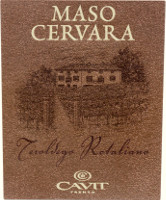
 Teroldego
Teroldego Intense ruby red and nuances of ruby red, little transparency.
Intense ruby red and nuances of ruby red, little transparency. Intense, clean, pleasing and refined, starts with hints of black
cherry, plum and blackberry followed by aromas of blueberry, violet,
pomegranate, tobacco, vanilla, chocolate and menthol.
Intense, clean, pleasing and refined, starts with hints of black
cherry, plum and blackberry followed by aromas of blueberry, violet,
pomegranate, tobacco, vanilla, chocolate and menthol.
 Properly tannic attack and however balanced by alcohol, good body,
intense flavors, pleasing roundness.
Properly tannic attack and however balanced by alcohol, good body,
intense flavors, pleasing roundness.
 Persistent finish with flavors of black cherry, blackberry and plum.
Persistent finish with flavors of black cherry, blackberry and plum. 20 months in barrique, 8 months in bottle.
20 months in barrique, 8 months in bottle. Roasted meat, Stewed and braised meat, Hard cheese
Roasted meat, Stewed and braised meat, Hard cheese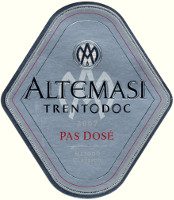
 Chardonnay (60%), Pinot Nero (40%)
Chardonnay (60%), Pinot Nero (40%) Intense golden yellow and nuances of golden yellow, very transparent,
fine and persistent perlage.
Intense golden yellow and nuances of golden yellow, very transparent,
fine and persistent perlage.
 Intense, clean, pleasing, refined and elegant, starts with hints of
apple, banana and bread crust followed by aromas of plum, yeast, praline,
honey, hawthorn, butter, mineral and hints of vanilla.
Intense, clean, pleasing, refined and elegant, starts with hints of
apple, banana and bread crust followed by aromas of plum, yeast, praline,
honey, hawthorn, butter, mineral and hints of vanilla.
 Effervescent and crisp attack, however balanced by alcohol, good body,
intense flavors, agreeable.
Effervescent and crisp attack, however balanced by alcohol, good body,
intense flavors, agreeable.
 Persistent finish with flavors of apple, banana and plum.
Persistent finish with flavors of apple, banana and plum. The base wine ages in barrique. Refermented in bottle on its lees for
72 months.
The base wine ages in barrique. Refermented in bottle on its lees for
72 months.
 Pasta with fish and crustaceans, Stewed fish, Roasted white meat, Broiled crustaceans
Pasta with fish and crustaceans, Stewed fish, Roasted white meat, Broiled crustaceans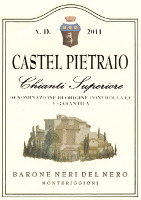
 Sangiovese (90%), Merlot (10%)
Sangiovese (90%), Merlot (10%) Brilliant ruby red and nuances of garnet red, moderate transparency.
Brilliant ruby red and nuances of garnet red, moderate transparency. Intense, clean, pleasing and refined, starts with hints of black
cherry, plum and dried violet followed by aromas of blueberry, blackberry,
black currant, vanilla and carob.
Intense, clean, pleasing and refined, starts with hints of black
cherry, plum and dried violet followed by aromas of blueberry, blackberry,
black currant, vanilla and carob.
 Properly tannic attack and however balanced by alcohol, good body,
intense flavors, pleasing crispness.
Properly tannic attack and however balanced by alcohol, good body,
intense flavors, pleasing crispness.
 Persistent finish with flavors of black cherry, plum and blueberry.
Persistent finish with flavors of black cherry, plum and blueberry. 10 months in barrique, 3 months in bottle.
10 months in barrique, 3 months in bottle. Roasted meat, Broiled meat and barbecue, Stewed meat with mushrooms, Hard cheese
Roasted meat, Broiled meat and barbecue, Stewed meat with mushrooms, Hard cheese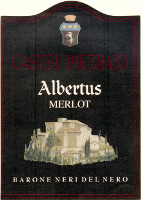
 Merlot
Merlot Intense ruby red and nuances of garnet red, little transparency.
Intense ruby red and nuances of garnet red, little transparency. Intense, clean, pleasing and refined, starts with hints of black
cherry, black currant and plum followed by aromas of dried violet,
blueberry, vanilla, peony, cocoa, tobacco, leather and eucalyptus.
Intense, clean, pleasing and refined, starts with hints of black
cherry, black currant and plum followed by aromas of dried violet,
blueberry, vanilla, peony, cocoa, tobacco, leather and eucalyptus.
 Properly tannic attack and however balanced by alcohol, good body,
intense flavors, pleasing roundness.
Properly tannic attack and however balanced by alcohol, good body,
intense flavors, pleasing roundness.
 Persistent finish with flavors of black cherry, black currant and plum.
Persistent finish with flavors of black cherry, black currant and plum. 15 months in barrique, 12 months in bottle.
15 months in barrique, 12 months in bottle. Roasted meat, Broiled meat and barbecue, Stewed meat, Hard cheese
Roasted meat, Broiled meat and barbecue, Stewed meat, Hard cheese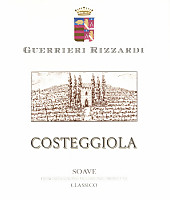
 Garganega (70%), Chardonnay (30%)
Garganega (70%), Chardonnay (30%) Intense straw yellow and nuances of straw yellow, very transparent.
Intense straw yellow and nuances of straw yellow, very transparent. Intense, clean, pleasing and refined, starts with hints of apple, plum
and hawthorn followed by aromas of citrus fruits, pineapple, peach and
almond.
Intense, clean, pleasing and refined, starts with hints of apple, plum
and hawthorn followed by aromas of citrus fruits, pineapple, peach and
almond.
 Crisp attack and however balanced by alcohol, good body, intense
flavors, pleasing roundness.
Crisp attack and however balanced by alcohol, good body, intense
flavors, pleasing roundness.
 Persistent finish with flavors of apple, plum and pineapple.
Persistent finish with flavors of apple, plum and pineapple. Fermented in cement tanks, aged in steel tanks.
Fermented in cement tanks, aged in steel tanks. Mushroom soups, Pasta and risotto with fish, Broiled fish
Mushroom soups, Pasta and risotto with fish, Broiled fish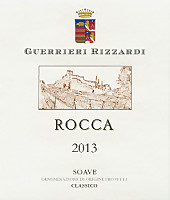
 Garganega (70%), Chardonnay (30%)
Garganega (70%), Chardonnay (30%) Intense golden yellow and nuances of golden yellow, very transparent.
Intense golden yellow and nuances of golden yellow, very transparent. Intense, clean, pleasing and refined, starts with hints of apple, plum
and citrus fruits followed by aromas of hawthorn, almond, ripe peach,
medlar, broom and hints of vanilla.
Intense, clean, pleasing and refined, starts with hints of apple, plum
and citrus fruits followed by aromas of hawthorn, almond, ripe peach,
medlar, broom and hints of vanilla.
 Crisp attack and however balanced by alcohol, good body, intense
flavors, pleasing roundness.
Crisp attack and however balanced by alcohol, good body, intense
flavors, pleasing roundness.
 Persistent finish with flavors of apple, plum and medlar.
Persistent finish with flavors of apple, plum and medlar. 12 months in cask.
12 months in cask. Pasta with fish, Mushroom soups, Stewed fish, Roasted white meat
Pasta with fish, Mushroom soups, Stewed fish, Roasted white meat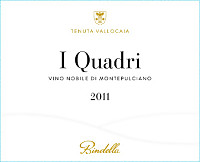
 Sangiovese
Sangiovese Brilliant ruby red and nuances of garnet red, moderate transparency.
Brilliant ruby red and nuances of garnet red, moderate transparency. Intense, clean, pleasing, refined and elegant, starts with hints of
black cherry, plum and violet followed by aromas of blueberry, raspberry,
blackberry, vanilla, chocolate, tobacco, leather, mace, pink pepper,
cinnamon and menthol.
Intense, clean, pleasing, refined and elegant, starts with hints of
black cherry, plum and violet followed by aromas of blueberry, raspberry,
blackberry, vanilla, chocolate, tobacco, leather, mace, pink pepper,
cinnamon and menthol.
 Tannic attack and however balanced by alcohol, full body, intense
flavors, agreeable.
Tannic attack and however balanced by alcohol, full body, intense
flavors, agreeable.
 Persistent finish with flavors of black cherry, plum and raspberry.
Persistent finish with flavors of black cherry, plum and raspberry. 20 months in cask, 12 months in bottle.
20 months in cask, 12 months in bottle. Game, Stewed and braised meat, Roasted meat, Hard cheese
Game, Stewed and braised meat, Roasted meat, Hard cheese
 Trebbiano Toscano (80%), Malvasia Bianca (20%)
Trebbiano Toscano (80%), Malvasia Bianca (20%) Brilliant amber yellow and nuances of amber yellow, transparent.
Brilliant amber yellow and nuances of amber yellow, transparent. Intense, clean, pleasing, refined and elegant, starts with hints of
raisin, dried fig and honey followed by aromas of apricot jam, peach, jam,
caramel, candied fruits, quince jam, date, citrus fruits peel, walnut,
tobacco, vanilla and nail polish.
Intense, clean, pleasing, refined and elegant, starts with hints of
raisin, dried fig and honey followed by aromas of apricot jam, peach, jam,
caramel, candied fruits, quince jam, date, citrus fruits peel, walnut,
tobacco, vanilla and nail polish.
 Sweet and round attack, however balanced by alcohol, full body, intense
flavors, pleasing crispness.
Sweet and round attack, however balanced by alcohol, full body, intense
flavors, pleasing crispness.
 Very persistent finish with long flavors of raisin, dried fig and date.
Very persistent finish with long flavors of raisin, dried fig and date. 3 years in caratelli barrels, 1 year in bottle.
3 years in caratelli barrels, 1 year in bottle. Confectionery, Dried fruit tarts, Hard and piquant cheese
Confectionery, Dried fruit tarts, Hard and piquant cheese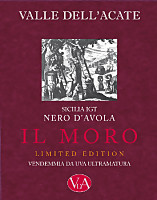
 Nero d'Avola
Nero d'Avola Intense ruby red and nuances of garnet red, little transparency.
Intense ruby red and nuances of garnet red, little transparency. Intense, clean, pleasing, refined and elegant, starts with hints of
blackberry, plum and black cherry followed by aromas of dried violet,
blueberry, vanilla, tobacco, cocoa, licorice, leather, tar, mace and
menthol.
Intense, clean, pleasing, refined and elegant, starts with hints of
blackberry, plum and black cherry followed by aromas of dried violet,
blueberry, vanilla, tobacco, cocoa, licorice, leather, tar, mace and
menthol.
 Properly tannic attack and however balanced by alcohol, full body,
intense flavors, pleasing roundness.
Properly tannic attack and however balanced by alcohol, full body,
intense flavors, pleasing roundness.
 Persistent finish with flavors of blackberry, plum and black cherry.
Persistent finish with flavors of blackberry, plum and black cherry. 12 months in barrique, 60 months in bottle.
12 months in barrique, 60 months in bottle. Game, Roasted meat, Stewed and braised meat, Hard cheese
Game, Roasted meat, Stewed and braised meat, Hard cheese
